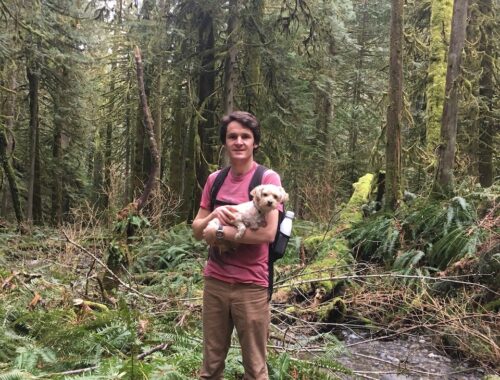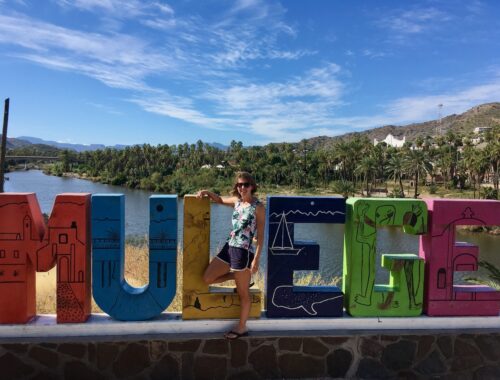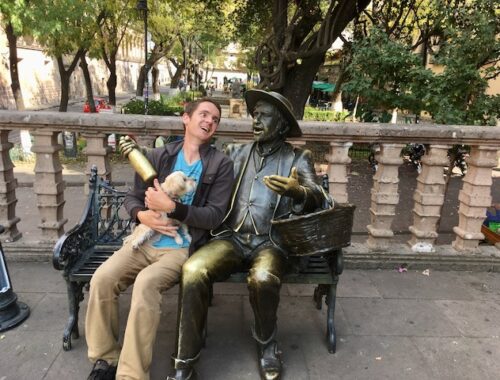
Travel Summary: Pacific Coast
We’re done with our time on the Pacific* and it is time to provide a quick overview of what we learned, what we felt, what we can recommend, etc. Basically, if you didn’t catch the individual posts, let me help you out here.
First, some parameters. For the purposes of this discussion, we’re talking where things began in Mazatlán, Sinaloa, to where we turned inland after Zihuatanejo. This is 1100km of road and about 17 hours of driving (according to Google). It’s not fast and we were lucky to be able to take our time with it – roughly a month. Yet, at the same time, we didn’t stop at every beach along the way. In fact, we chose the opposite approach, basing ourselves in a few pleasant stops along the way with a focus on relaxation and comfort. That’s what we did and this non-serious summary can only deliver on that experience.
Mazatlán: A real mixed-bag of a place. This was a big destination for visiting Mexicans and we found the constant stream of party-trucks a bit of an annoyance. The downtown has a lot of potential, but has a ways to go to overcome the chaos. Still, there’s a pocket of of the Centro extending to the beach that is one of the nicest spots we’ve found in Mexico. Mazatlán is a sprawling place (we didn’t even get to the hotel zone) so it’s going to mean different things to different people. It feels more aligned with the north than the tourist zones to the south, but that’s not necessarily a bad thing. Come with an open mind and your walking shoes so that you can run the malecon and hike up to the lighthouse lookout.
Southern Nayarit: Unless your are driving from Sinaloa or maybe Durango, you won’t likely experience the majority of Nayarit and really that’s fine. It’s a place of struggling agricultural towns and highland cities like Tepic that have little to offer travellers (sorry). But where highway 200 eventually drops back down to the coast, there are a string of beaches that may very well be on your list to check out. It’s easy for the curious traveller to rent a car in Vallarta and drive an hour or two north to check them out. Each has plenty of services, a mix of accommodations, and except where the mountain road winds between PV and Sayulita, the driving is pretty straightforward.
Generally speaking, the farther north you go, the more laid back. Case point: Sayulita has devolved into a total zoo, while less than an hour up the road, Lo de Marcos might have you looking for something to do after a few days. Some people drive there RVs down here for the winter, others rent (or own) a home. Many are young, looking for surf and a good vibe, others have their family in tow. A recommendation would be to choose a couple spots. Dining options are rich, safety is not an issue, and although the ocean can be rough in spots, there are plenty of options that are good for swimming. Best of all, there’s enough room for everyone (Sayulita notwithstanding).
Puerta Vallarta and around: I do want to stay in PV proper at some point, but we skipped it on this trip. The downtown streets are dense and busy, crushed as they are between the mountains and the southern end of Banderas Bay. If we came, it would be to stay as centrally as possible as the rest of it was no fun. From where you come out if the moutains, down to the hotel zone and the airport, it’s just a slog of traffic. I know people who love places like Bucerias, like it’s a touch of ‘real’ Mexico, but that was not the vibe we got. Better to go a bit further north into Nayarit (as above). For drivers, add extra time fro navigating this section. Even south of the city, the way is winding and slow. It seems like there must be a quicker route, it’s not until you get up and over, that the road straightens out and you can make some tracks into what they now dub the Costa Alegre.
Costa Alegre: South of PV we noticed a change in the weather and the topography. There’s a much wider bench between mountains and see here, great for agriculture. Suddenly it felt noticeably hotter and when we drove through at least, much drier. As you move south, there are some wilder beaches that may entice you, but our target was Maleque. This is a funny place because while it has a long scoop of sandy beach in a somewhat protected bay, the town isn’t overly focused on tourists (Christmas week notwithstanding). That’s for the other end of the bay at Barra Navidad – a nice idea if the beach at that end wasn’t terrible for swimming. Like they got the two places mixed up.
If you want to fly in, Manzanillo is close by, making the spot ideal for longer stays. The water here is super warm, the town is big enough to keep you occupied, and it felt chill and safe. It’s a bustling, working town to be sure, but the action is spread around. For people looking for trendy restaurants and more intensive tourist options – maybe not for you. For lazing around, hiking to a viewpoint, and at most taking a drive to a nearby beach, it’s plenty.
Michoacán: This is a wild coast. There are barely any tourist services here. Indeed, there are barely any services at all. In many spots, the mountains plunge right to the sea and it’s a slow route with a lot of winding round dramatic overlooks. Our timing was off and the one place we intended to stay was overrun with New Years revellers, apparently content to sleep on the sand in tents in tightly packed rows. You can press on from Manzanillo to Lázaro Cárdenas in single day and that might be the best choice if intent on continuing on this way – this part of the state, while beautiful in places, has plenty of challenges. Lázaro Cárdenas is big and ugly, but you can get a room there or in nearby Playa Azul. In between, there is almost nothing to be found outside of a few overpriced rentals (I guess, it’s big for surfing). Really, it’s for camping – just not at Christmas or New Years.
Zihuatanejo: If you’ve gone this far, you have to press on to Zihuatanejo and Ixtapa. The former is a former fishing village on a fabulous bay turned minor tourist hit, the latter, the attempt of the Mexican government to construct a new mega-resort town from scratch. That second description doesn’t sound like a winner, but the two places compliment each other well, separated by a 20 minute drive and a hilly headland.
We stayed in Zihua. It’s a proper town that has the benefit of numerous beautiful beaches, good dining options, and hot hot weather. This is Guerrero so expect to feel the presence of the military here more than a place like Jalisco. In our stay, we never felt a shred of danger, but it’s not that kind of danger. It’s big and flashy and hopefully stays to other cities and lawless mountain roads. This place is kind of like a smaller Vallarta or what Sayulita might be able to be if it had a bit more room to expand. It was nice to see gringos again (to be honest) and some have been coming here for years – it’s just one of those places. I wouldn’t stay in Ixtapa, but they have wonderful paved trails for biking/running/walking. There is a beach behind the resorts, but it’s not the kind the you want. Way at the far (north) end, you can find a bit of wilderness if you want a change.
From here, Acapulco is not too far away, but it’s a place now perpetually on the ‘do not visit’ list. Then after a long stretch you can get to beaches in Oaxaca. In between, I don’t know, it’s kind of off the map. Overall, it’s not the way you want to go. Better to head inland (here or maybe back in Colima) and change things up.
*Not quite accurate. We’ll be back to the Pacific way south in Oaxaca on the trip home, but we’ll tackle that on its own.

An Exercise in Spelling
You May Also Like

New Me/New You
May 15, 2021
Mew-ledge doesn’t rhyme with Mulegé
November 18, 2022
